Dear Readers, Cobalt Firearm Instruction is a participant in the Amazon Services LLC Associates Program, an affiliate advertising program designed to provide a means for us to earn fees by linking to Amazon.com and affiliated sites. This post may contain various affiliate links. If you click them and make a purchase, it will not cost you a penny more, however a small commission will be paid to CFI to help keep the lights on, we will NEVER endorse something we do not wholeheartedly believe in, ever. Thanks!
New Shooter: “I know you gotta have the right gear to shoot.. but what is that? What gear [besides a gun] do I need before I go to the range the first time?”
That is BY FAR one of the most common questions I get from students after they buy their first gun or learn how to shoot for the first time.
The answer, it turns out, is pretty dang simple.
It's like when my brother started playing hockey...
Sure, he knew how to skate and had a stick sitting in the closet at home, but he’d be hard pressed to find a coach that would let him hit the ice come Sunday if the boy didn’t get some shoulder pads, a helmet, gloves, and so on. There are basic necessities he needed to play the game.
He could wax eloquent all he wanted about the “good old days” when all you needed was a pair of skates, a trash can, a rock, and a reckless disregard for the dangers of head trauma, but that wouldn’t do him any good, he needed a bit more “stuff” to get started.
NOW, If my brother had felt the urge to buy a $1,000 stick or a specialty visor, those would have been nice but he couldv’e easily gotten by without them.
Just like in hockey (and a lot of things in life) there are going to be some “extras” in shooting that you NEED, and then some other extras that would be cool to have, but you can get by without (no matter what you see on instagram.) It takes more than a gun, some ammo, and a “can-do” attitude to hit the range safely and effectively.
Now, if you’ve been reading this blog, following us on social media, been in touch with me directly, or just generally doing your homework about shooting you know that it takes more than just a gun to hit the range for the girst time, but not as much stuff as marketers spend a good amount of money to get you to think. In our New Shooter Range Gear (NSRG) series, we’re going to cover all the “extra” gear that a new shooter needs to get ready to hit the range.
This post is an INTRO, this won’t be every single piece of “nice-to-have” gear out there, (though we will give you the entire “need-to-have” list) and we will be back with deep dives into everything on this list as time goes on.
I KNOW WHAT YOU'RE THINKING...
“If I wanted product reviews I could find them anywhere, I’m here for actionable information for the new shooter – what’ve you got?“
I HEAR YOU.
We’re using this segment to do 3 things:
1. Cut through the noise and get to what a new shooter will ACTUALLY NEED, and what will just be NICE if you can get it.
2. Explain the pros and cons of the gear that you will need, and explain WHAT IT WILL ACTUALLY DO FOR YOU.
3. Explain what to look for in each product when searching for the best fit for you.
That’s it. Simple as that.
NOW, the way I judge gear is straightforward and basic…
FIRST, WE BREAK IT DOWN INTO 1 OF 2 CATEGORIES:
(a) NEED-TO-HAVES ... OR ... (b) NICE-TO-HAVES*
*As with all our posts, this is designed for the NEW SHOOTER and is normative. Individual specific needs may, of course, vary.
As you progress through your shooting career, you may find that what was once a NICE-to-have has now become a NEED-to-have to help you tackle new challenges. This is just meant to be a basic primer on the topic for the new shooter.
SO WHAT'S THE DIFFERENCE? ...
- NEED to have – Items that all shooters, regardless of experience or skill level, will need to shoot safely.
- NICE to have – Items with a practical purpose that may help your shooting, but aren’t a true necessity.
**PLEASE NOTE**
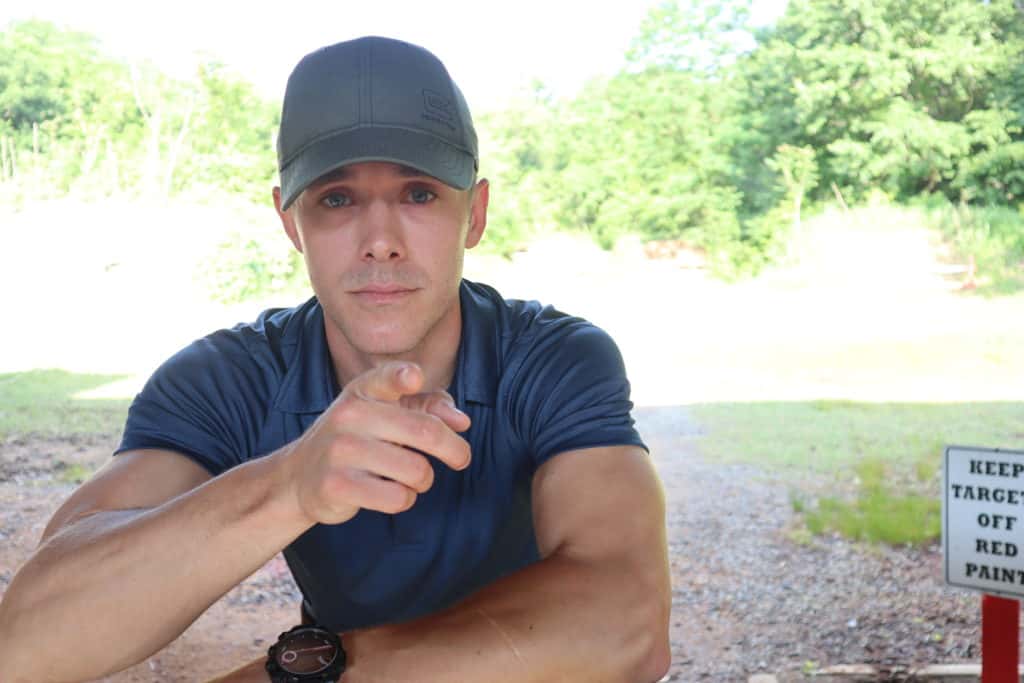
My goal here is to educate the NEW shooter on what they will NEED, and what might be nice to have, if they’re planning on hitting the range for the first time.
I understand that one person’s nice to have may be another person’s need to have for medical reasons, limitations, strengths, etc. So your list may not mirror ours exactly when you consider your own personal variations.
(( This list assumes that you have your own gun (or a way to rent one), ammunition to shoot, and targets to shoot at. ))
1. Ear Protection
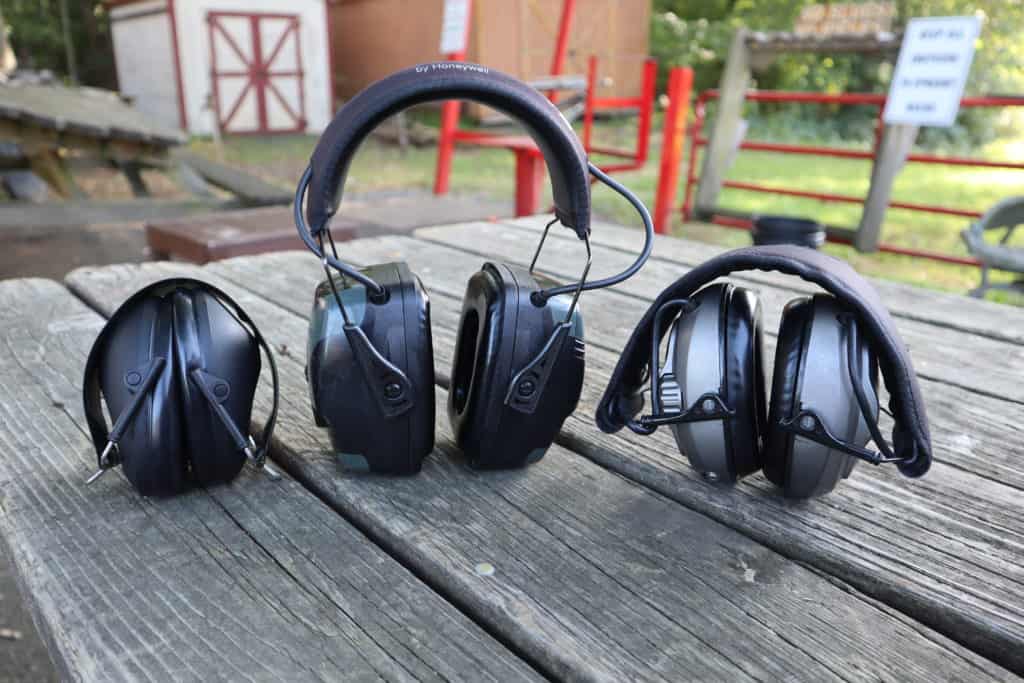
WHY?
- Hearing loss is cumulative and IRREVERSIBLE.
- Sounds over 100 Decibels (dB) can begin causing this permanent damage. (This number is debatable. Reputable sources vary from 85-120 for the baseline, but you’re about to see why it doesn’t matter either way. )
- Even a .22 (One of the smallest calibers you’ll see out on the range) makes a sound around 140dB!
- Disclaimer: If you’re concerned about your own hearing loss please consult your doctor, this is not intended to be medical advice, just information on best shooting practices.
WHAT TO LOOK FOR.
1. NOISE REDUCTION RATING (NRR) - LOW 20's MINIMUM
Ear protection is classified by a Noise Reduction Rating (NRR) system. NRR is a unit of measurement used to determine the effectiveness of hearing protection to decrease sound exposure. These ratings are displayed on the package by a number (usually in the 20s or 30s) the higher the number, the more protection they offer.
2. IN-EAR / OVER EAR
You have the choice of either in-ear protection (earplugs) or over-ear protection (earmuffs) both have options that will offer you substantial protection, it’s all about what’s comfortable for you. For indoor shooting, I recommend using both foam earplugs AND over-ear earmuffs.
3. ELECTRONIC vs NON-ELECTRONIC
You’ll have the choice between electronic and non-electronic in both earplugs and earmuffs. (ELECTRONIC EAR PLUGS USUALLY BEING HIGHLY CUSTOMIZED AND MORE EXPENSIVE.) The MAIN difference between the two will be that electronic sets will typically cost a little (or a lot) more money, and will allow you to better have conversations/receive range commands/listen to instruction on the range. Electronic headsets amplify soft sounds and block out loud ones automatically. There are many non-electronic options that offer EXCELLENT (and even better) noise protection when compared to their electronic counterparts, but they make it difficult to communicate as they block ALL sounds indiscriminately.
WHAT ABOUT SOME OPTIONS?
A great all-around choice that is easily paired with foam earplugs for maximum hearing protection without losing the ability to hear range commands/instruction. I’ve used the company before and have been very satisfied with the results.
A well reviewed product by people who’s opinion I trust. Much like the Impact series by Howard Leight, these headsets work well solo, or paired with foam earplugs as well.
A very basic pair, well made, with an NRR rating on the lower side of things (23 NRR) without electronic hearing protection. A good economic option for a casual shooter with smaller calibers (think rimfire.)
Foam plugs can work great on their own (32 NRR) or as an addition to electronic muffs for added protection. Some will find them uncomfortable but you get used to them rather quickly.
A well reviewed product by people who’s opinion I trust. Much like the Impact series by Howard Leight, these headsets work well solo, or paired with foam earplugs as well.
2. Eye Protection
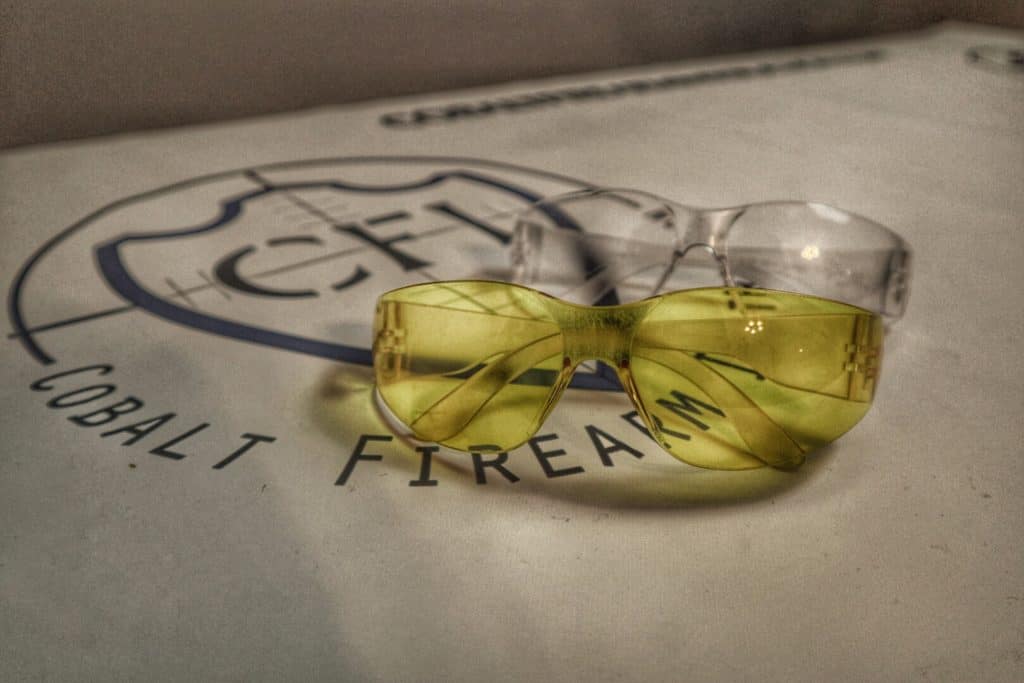
There’s no need to go overboard here. You can outfit yourself with a suitable set of shooting glasses for a very reasonable price, either online or in-store.
WHY?
- Much like with your Ears, Eye damage is easy to cause, and very difficult and expensive to repair (if you can at all) once you have done so.
- BRASS. Not just yours, but everyones. Semi-automatic firearms throw piping hot empty brass casings everywhere and you DO NOT want to get hit in the eye with one.
- Shavings! Firearms that are too dirty, out of alignment, or just in a general state of disrepair, can shave bits of lead, brass, and debris while firing. Guess where you don’t want it landing?
- The eyes are SENSITIVE. You are handling a LOADED FIREARM. The last thing you want to do (even if no permanent damage is caused) is be subjected to pain in your eyes and risk reacting while holding a loaded gun. For your sake and the sake of those around you, protect those peepers.
- Disclaimer – Since a lot about what makes eye protection work is the fit of it, I’d recommend trying some out before you decide to buy. Nearly all sporting goods stores will have some you can try on and check the fit.
WHAT TO LOOK FOR.
1. SHATTER RESISTANT MATERIAL
You may hear someone comment that “it doesn’t matter what you have on your eyes if the gun explodes.” While they are TECHNICALLY correct, that’s not the main reason you’re wearing protective glasses. Your everyday eyeglasses (readers, prescription specs, etc.) are FAR MORE likely to shatter when impacted by (the very common) minor debris or projectile, so you want to be prepared with something more suited to handle the everyday needs of shooting.
2. WRAPAROUND
Hot brass and debris is not kind enough to always approach head-on. It will bounce around and come in from the sides and the top as well. Wraparound glasses ensure that none of that white hot metal finds a way to sneak in the side and lodge itself against your eye. (OUCH!)
3. COOL LOOKING
Make ’em cool, bro.
WHAT ABOUT SOME OPTIONS?
HOWARD LEIGHT GENESIS
Clear Lens
$11.05 (Amazon, above)
PELTOR 3 PACK SHOOTING GLASSES
$12.99 (Amazon, above)
SMITH AND WESSON M&P GLASSES
$26.56 (Amazon, above)
THAT'S ABOUT IT.
As I said before, different people in different circumstances will have minor changes, but from brand new shooter all the way to experienced marksman, if you give someone the proper safety knowledge, a firearm, ammunition, a target, and ear/eye protection, they can safely hit the range and do what needs to be done.
The NICE to Haves.
(Important but not CRITICAL)
1. Hats
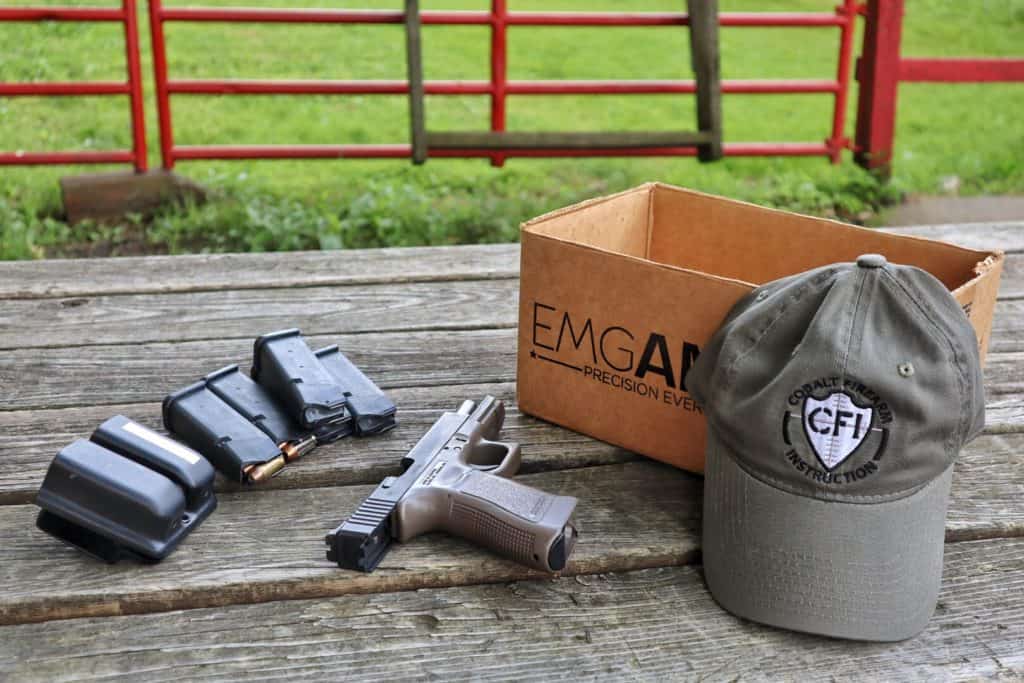
WHY JUST NICE?
Like with everything on our “nice” list, this is something you’ll probably want, but technically do not NEED. With the exception of certain classes you may take, the majority of ranges don’t REQUIRE you to have a hat, though it does add some comfort and safety features we think you’ll like.
WHY STILL GET ONE?
- BRASS. Brass likes to bounce. Bounce off of walls and the tops of heads, etc. The brim of a hat keeps overhead brass from falling down on your face.
- If you shoot outdoors, you’ll be happy to keep the sun out of your eyes.
- If you have long hair, it will keep it out of your face.
- Helps keep your hair clean. Like it or not, shooting can get dirty. Keep some of that lead/dirt out of your hair.
- Disclaimer – CFI hats have been known to increase shooting ability by up to 90%*
*Findings published in “Not Extremely Accurate Science” monthly
WHAT TO LOOK FOR.
1. A PIECE OF CLOTH OR FABRIC WITH A BRIM TO COVER YOUR HEAD.
This one is pretty self explanatory guys and girls.
2. Pants (Tactical)

Always have a backup pair on hand.
WHY JUST NICE?
Everyone knows you need to wear pants in public. This isn’t about whether or not you should wear pants to the range (YOU SHOULD. No one needs to see you shooting in your drawers.) But if we’re being honest, a new shooter doesn’t need “tactical pants” at all. Shooting paper on the flat range is easily done in blue jeans as well. This is about some of the benefits of “tactical” pants and letting you decide.
WHY STILL GET ONE?
- The extra pockets are extremely helpful for storing everything you will need within arms reach.
- The material is made to be breathable, yet durable. Nothing like a pair of fitted blue jeans on a hot summer day to make you wish you’d worn shorts.
- Ruggedness – Reinforced knees, chassis, and groin help avoid wear and tear on common points that you’ll ruin if you’re actively training.
- Whether they are “tactical” or not, I wholeheartedly recommend getting a couple pairs of pants that you wear to the range. You will get them dirty, you will need to wash them a lot, and before long they will not be fit for wearing out to dinner.
WHAT TO LOOK FOR.
1. QUALITY MATERIAL
If you’re going to spend the money on tactical pants, make sure they’re made out of good material and possibly have rip-stop stitching. (This keeps tears to a minimum and makes them easy to fix.) Also look for reinforced knees, chassis, and knife clips (before long you’ll start hanging tools from them, and that repetitive wear will start a cut quickly.)
2. BREATHABLE / LIGHTWEIGHT
You can always add layers underneath your range pants for the cold months, but if they’re made from heavy and stuffy material, you will only be able to cool off so much on those hot summer days.
3. PRACTICAL POCKETS
This one can be a bit subjective, but don’t buy the pair of pants with a million pockets just for the sake of having all the extra storage space. Make sure they make sense and are in a place that you would use them (magazine pockets, phone pockets, hidden compartments, a place for a tourniquet, etc.)
WHAT ABOUT SOME OPTIONS?
PREMIUM
5.11 Tac Lite Pro Pants
$50+
If you have the spare change, it’s tough to beat the quality of a good pair of 5.11s. Certainly not a NECESSITY for the new shooter on the range, but dang nice anyhow.
3. Holster

Not a NECESSITY to start, but will soon be for most.
WHY JUST NICE?
This is one of the “nice-to-have“s that will almost certainly make the switch to the “need-to-have” category before long, but for the brand new shooter looking to hit the range, a holster is not a necessity. You will find that some public ranges won’t even let you draw from your holster, and you’re always fine to bring your gun onto the range in a bag or case.
WHY STILL GET ONE?
- If you have already gotten your Concealed Carry License, DO NOT stick a gun in your waistband and call it a day. Get A Holster. However, I cannot stress this enough (again) JUST BECAUSE YOU’VE PASSED YOUR BACKGROUND CHECK TO BUY A FIREARM, DOES NOT MEAN YOU HAVE THE LEGAL RIGHT TO CARRY A CONCEALED GUN. CHECK YOUR STATE LAWS BEFORE TRANSPORTING YOUR FIREARM IN ANY MANNER.
- Nearly every intermediate/advanced training class will require you to have some kind of holster for your gun, each will have their own requirements.
- SAFETY. One of the safest places to store a gun on the range when not in use is in a secure holster. If you ever plan to carry, open or otherwise, the most secure way is in a proper holster.
WHAT TO LOOK FOR.
1. INSIDE or OUTSIDE THE WAISTBAND (IWB/OWB)
Holsters come in two main “styles” – Inside the waistband (IWB) and Outside the waistband (OWB) how you plan to use the firearm will dictate what kind of holster you choose. IWB are often better for concealment (ONLY IF YOU HAVE YOUR CONCEALED CARRY PERMIT) and OWB are often better for open carry applications (be that on the range or every day carry, if permitted by laws in your state.)
2. COVERED TRIGGER GUARD
One of the most important safety features of a good holster is that it completely covers the trigger guard. There should be NO space for any debris/clothing/foreign objects to sneak in and interact with your trigger while it is in your holster.
3. COMFORT/QUALITY
We’re just talking about holsters in general here, not specifically concealed carry. If it isn’t comfortable, you will not wear it and the gun will be out of reach. If it is not from a quality manufacturer, it won’t survive the rigors of daily or tough use. I have to give a shoutout here to crossbreed holsters as well as eclipse holsters. No, we do not work with them in any regard at this point, just big fans here at CFI.
WHAT ABOUT SOME OPTIONS?
Great options for Kydex concealed carry.
COMFORTTAC
Recommended by multiple students/peers who want to try a belly band holster.
Good prices on Made-in-the-US products ready to ship for just about any handgun you could have.
RAVEN CONCEALMENT
An innovator in the IWB/OWB/Kydex space.
WHY JUST NICE?
If you aren’t making use of a holster, this one is firmly in the “nice-to-have” category. Any old belt will hold up your pants while you shoot; it might get a bit dirty which some people don’t like, but you don’t NEED to go out and buy a gun belt. The line gets blurry when you add a holster. While TECHNICALLY a normal belt CAN get the job done in a pinch of holding your holster, we DO NOT recommend it. When you’re carrying a gun, you NEED a proper holster and belt combination suited to the task for it to function the way it should. Not to mention that the added weight and rigors of use will make short work of your dress belt and you’ll be spending quite a lot of time and money buying new ones.
WHY STILL GET ONE?
- STURDY. Whether you buy a leather or nylon option for your gun belt, they are BUILT to handle the rigors of the added weight and abuse that comes with carrying a holster. From the stitching, to the thickness, to the materials used, these belts are made exactly for what they’re going to be used to do.
- They will save you money. Carrying a holster on your dress belt will bend it quickly and usually rip it almost as fast. A few weeks hitting the range and you will be back buying a new one if you care about how it looks in public. This will happen time and time again if you keep putting on a holster. The (average) $60 upfront cost isn’t great, but its a far cry from the $100+ you’ll spend replacing your regular belt over and over.
- SAFETY. Holsters don’t only ruin normal belts, they can overpower them. You want the base on which you secure your loaded firearm to be able to stand up to the task without flopping. bending, or breaking, sending your loaded gun to the ground.
WHAT TO LOOK FOR.
1. MATERIAL
Whether you decide to go with leather or nylon (read: do you like Ford or Chevy) you’ll be fine as long as you choose a quality manufacturer. Leather looks more formal and natural, making it a good choice for you if people will get to see your belt (so that you’re not advertising “HEY LOOK AT ME, I HAVE A GUN”) while nylon belts often come with inserts that stiffen them even more to help hold up to the rigors of carrying 1+lb of steel and plastic on your hip all day long.
2. WIDTH
Keep in mind the pants you will be wearing when you purchase a belt. Gun belts tend to run WIDE (for more material and durability) if all of your pants have narrow belt loops, this fancy new belt won’t do you any good. Most come with width options, pay attention!
3. STITCHING
It’s easy to get caught up checking out only the belt material, but make sure it has double-stitching (both at the top and the bottom) while not the be-all-end-all of quality tests, that’s a good sign that the company you’re considering is making a good gun-belt product.
WHAT ABOUT SOME OPTIONS?
BLUE ALPHA GEAR
RELENTLESS TACTICAL
An innovator in the IWB/OWB/Kydex space.
WHY JUST NICE?
With the exception of those PHYSICALLY INCAPABLE of loading a magazine (we don’t mean you don’t find it particularly fun or comfortable) people do not NEED a speed loader. It sure makes loading a lot of magazines much easier if you’re doing some serious training, and after my students have learned to load magazines by hand without any trouble, I do recommend they get one, but it is NOT a necessity for most.
WHY STILL GET ONE?
- EASE. This one is simple. Once you have learned the mechanics of loading magazines on your own, I recommend you get one for yourself. They will save your thumbs a good amount of work, ESPECIALLY once you’ve purchased a bunch of magazines and (as we recommend) load them all up prior to going out to hit the range. Your hands will thank you.
- TIME SAVING. While not as much time as advertisers would like to have you believe, if you get into a rhythm, using a speed loader will save you a good amount of reloading time over doing it by hand. This comes in especially handy if you’re on the clock at the range and don’t want to waste half of the hour you just bought trying to load magazines.
WHAT TO LOOK FOR.
1. UNIVERSALITY
While having a speed loader branded by your favorite company may be cool, your gun may change. Get a speed loader that will be able to handle a variety of calibers and magazines.
WHAT ABOUT SOME OPTIONS?
MAGLULA UNIVERSAL SPEED LOADER
$20-30
ETS UNIVERSAL SPEED LOADER
$20-30
NEED or NICE?
Need, in the way that you need to wear a shirt and shoes out in civilized society to go to the range. Nice, in that you don’t need any specialty gear in this category to make it work. I’ll go over some specifics below for each.
WHAT TYPES?
- SHIRT – Crew neck preferably. Hot brass (like we’ve talked about before) finds its way into all of the worst spots for you as a shooter. This very often means right down your shirt. Due to anatomical differences this means that women especially need to be mindful of the shirts they wear to the range. Just like with your eyes, you DO NOT want to deal with scalding hot brass going down your shirt while holding a loaded gun.
- SHOES – Close-toed shoes with a flat sole. Plain and simple. You don’t need super cool range boots, or tactical gear when it comes to your footwear as long as you’re not wearing flip flops or high heels, essentially. It might be worthwhile for you to get a pair that you only wear to the range and keep out of the house and car, to keep from tracking particles of lead and debris that you will pick up while on the range.
CONCLUSION
As with the firearm you choose, your decision on gear will ultimately come down to your abilities and desired tasks. Taking the first steps into shooting doesn’t need to be an extremely expensive proposition, and a lot of things on this list are NICE to have but you do not need them.
Far above your GEAR in terms of importance are your mindset and your skills (training).
Gear will NEVER be a substitute for those, only ever an enhancement at best. As a new shooter your focus should be firmly on building a foundation of fundamental skills and honing those before you begin thinking about cool gadgets and gizmos.
As time goes on, and we bring you more information in our NSRG series, I hope you find it all incredibly useful. Share it with someone who has the same questions, and always remember, as with everything we do here at CFI, if you have any questions, need any clarification, send me an email, comment below, reach out on social media, we’ll be more than happy to help.
Stay Smart, Stay Safe, and Never Stop Improving guys and girls, and I will talk to you soon.

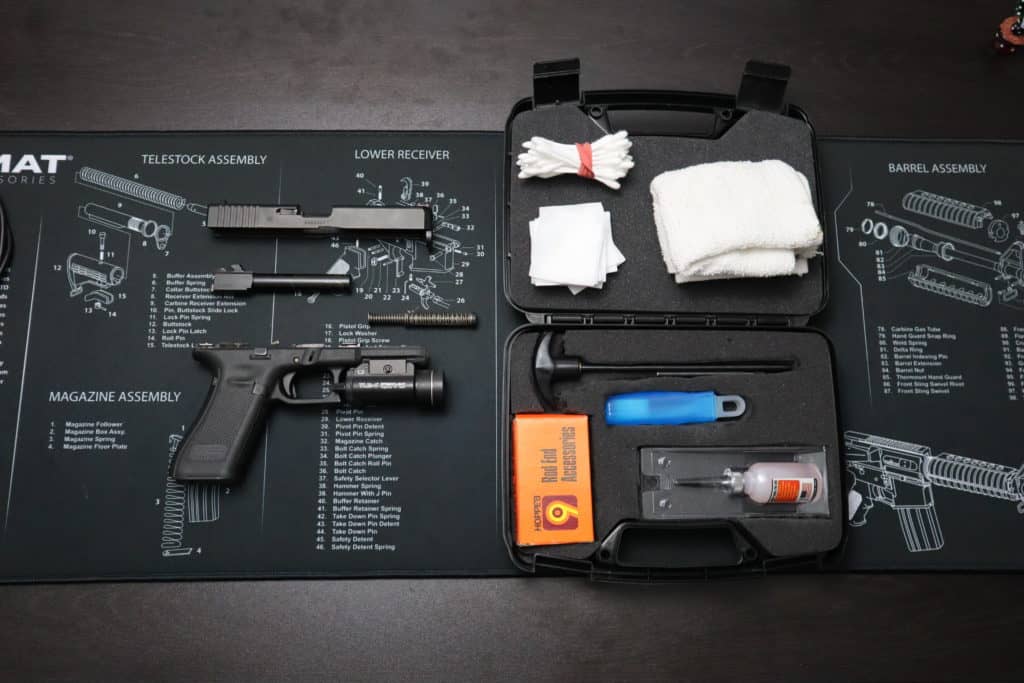







Solid article. Can’t agree enough with your statement that gear can only enhance your abilities. Keep up the good work.